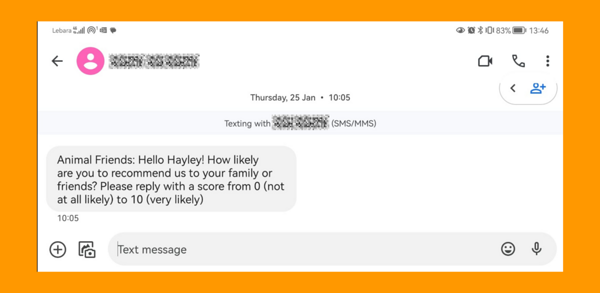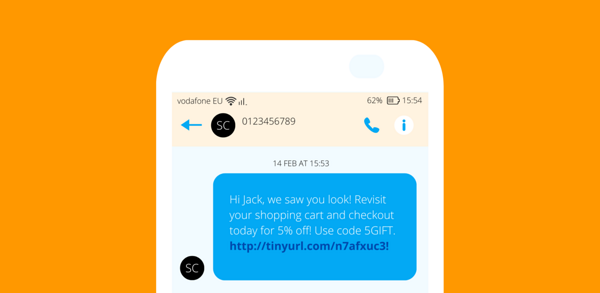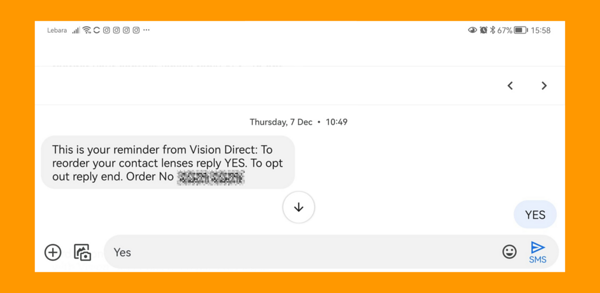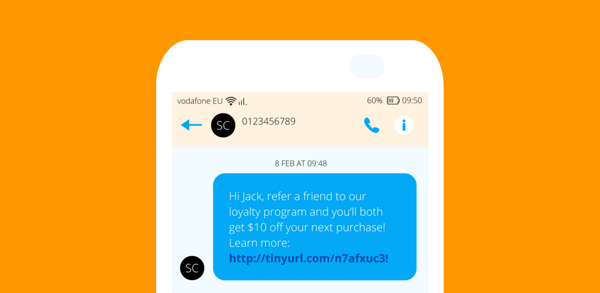Acquiring new customers is a costly business not just in terms of marketing spend but also in the amount of time and effort involved. You can’t throw together a paid online ads campaign and hope for the best – you need a complete strategy backed by insights and staffing resources to ensure you attract the right kind of buyers via the most profitable channels. Then, rinse and repeat: the cycle of driving new business continues.
Although new customer acquisition is essential, retaining customers is equally important. It's much more cost-effective for starters, as many statistics prove. For example, in 2014, Harvard Business Review published a study that claimed gaining new customers was five to 25 times costlier than keeping existing ones. Experts, like Kansas-based business advisor John Addessi, agree with this theory, even today.
It's not just the cost factor that makes customer retention a wise marketing strategy. According to SmallBizGenius, a mere 5% increase in loyalty can boost profits by 25% to 95%! So it really pays to focus on retention strategies alongside recruiting new customers. But how exactly do you build long-lasting relationships for long-term business growth and success? Keep reading to discover five customer retention strategies you can start implementing today.
What is a customer retention strategy?
Customer retention strategies keep current customers happy and satisfied so they return to your business and spend more money with you. They don't churn, i.e., only buy from you once or twice and then head off to a competitor.
Customer retention is about building long-term relationships with customers to gain their trust and loyalty. You do this by continually engaging with them and keeping them interested in your offering. It involves different strategies, and we'll explore the most effective ones in this article.
Why is customer retention necessary?
Messente's Anneli Eesmann explains the significance of this key marketing concept: "As Head of Support, my focus is on delivering the best experience possible so customers aren't tempted to look elsewhere. Retention is like the last and most vital jigsaw piece on a puzzle board – without loyal customers, you can't develop a sustainable business or reliable revenue stream. Strong customer loyalty equates to consistent business growth. And it also lowers your advertising costs because you don't have to spend so much on acquiring new customers."
How to measure customer retention
Customer retention is measured by calculating the number of customers you have at the end of a time period compared to the number you had at the start, factoring in any lost and gained customers along the way. Here's an example, plus the basic formula for this metric.
Suppose you had 120 customers at the start (S) of February. You gained 18 new (N) customers but also lost five during the month. So, at the end (E) of February, you have 133 customers - a high customer retention rate of 95.8%.
Formula: E-N/S x 100 = CRR
Calculation: 133-18/120 x 100 = 95.8% customer retention rate
Some other metrics you can use to indirectly measure your business's ability to retain customers include:
Customer lifetime value (CLV) - how much revenue you can expect from each customer, on average, throughout their lifetime as a customer.
Net promoter score (NPS) - a single question that you ask customers to establish their perception of your brand: How likely is it that you would recommend [Your Company] to a friend? Customers give a rating, which helps you establish your NPS score.
Customer churn rate - also called 'rate of attrition', which is the percentage of customers who stop buying your product or service within a specific time period.
Repeat purchase rate - also called 'repurchase rate', which measures how frequently customers make repeat purchases within a specific period.
Five invaluable customer retention strategies
You can improve customer retention through personalised communications, outstanding customer service and UX, community building and customer rewards. Check out these strategies in more detail below.
1. Personalise your marketing and communication campaigns
Customers want to feel special – they don't want to be treated the same as every other customer. And they expect you to understand what they want and need. You can go some way to achieving this by sending out personalised messages (even if you're sending the same campaign, en masse, to your entire customer base).
For example, if you send an early access sales campaign to all existing customers by text message, you can still add personalisation by addressing each person by their first name. Although small, this gesture assures the customer you know who they are, and this will make them feel valued.
Other important factors in marketing personalisation include:
Pitching highly relevant products or services to customers: ones that are likely to pique their interest based on past purchase history, wishlist details or direct feedback.
Sending valuable re-engagement offers such as exclusive discounts, promo codes, deals and coupons. You can also combine a special discount code with an abandoned cart reminder to nudge customers into continuing through the checkout.
2. Offer smooth onboarding and shopping experiences
Welcome new customers or subscribers to your brand as quickly as possible. Depending on your business type, you could allocate a team member to personally welcome each client with an onboarding phone call. Alternatively, implement mechanisms to automatically send an introductory message via email or text.
Example welcome text:
Hi Michael, thanks for subscribing to our SMS updates and promos! You're now eligible to receive exclusive offers and savings.
Aside from an excellent onboarding process, focus on UX throughout the customer journey. Convenience is the key here. Make your website smooth and easy to navigate (and fast loading, even if it means losing a cool but slow design). Also, let customers place orders via their preferred channel – consider in-app, social media or SMS ordering as well as your website. The checkout process should be frictionless to reduce cart abandonment.
3. Provide excellent customer service
There are many ways to enhance a customer's experience of your business, even after they've made a purchase. Start by sending out an order confirmation and delivery updates, then follow up with post-sales support to check whether customers are happy. Collect customer feedback to show buyers you care about their opinions.
Here are some other service tips to implement:
Provide essential training sessions and resources for staff so they can answer customer questions accurately and resolve problems swiftly.
Create step-by-step product tutorials or tips for customers.
Boost customer response times by setting up automated replies and assigning queries to the right people/departments, so they can respond quickly and close tickets faster.
Provide support through popular channels like SMS, Messenger and WhatsApp.
Offer a flexible return/exchange policy to foster trust and avoid customer complaints.
Do also equip your customer service function with the right tools and software to engage with customers effectively. Choose a reliable business text messaging service, CRM or CEP, that can help you utilise customer insights, streamline customer relationship management and automate specific communications.
4. Reward loyal customers
Recognise and reward all customers who express even the slightest wish to buy again from your business by getting them to join an exclusive loyalty program loaded with valuable perks that they can't get from a competitor.
A common approach is to offer subscribed customers benefits just for them, like limited-time offers, VIP discounts, first access to new product releases, periodic free shipping, a birthday freebie, etc. Or you can set up a tiered program to reward high-engagement customers with bigger and better incentives.
You could use a dedicated rewards platform to administer your customer loyalty program or manage it in-house after encouraging customers to sign up for your email or SMS list. Why not also set up a referral program to economically gain new customers – you could reward both referring customers and the new signups simultaneously, helping to win their trust from the get-go.
5. Build a community and promote engagement
Keep customers engaged by regularly communicating with them. Send newsletters, general promotional messages, new customer case studies and testimonials, and be continually active on social media. Build and follow a carefully thought-out communications plan to maintain regular and relevant contact.
However, don't bombard customers with messages – getting the frequency right is vital. Otherwise, your business might come off as pushy, spammy or even suspicious. It's perfectly okay to conduct high-engagement activities now and then, like text-to-win competitions or user-generated content campaigns. If you host a forum, Facebook or Viber Community, ensure administrators keep those channels active even when member activity is slow.
In the background, keep building your community by collecting customer emails and phone numbers where possible (with consent as per data protection rules!). Finally, ask engaged customers to review your company on public platforms to boost perception through positive word-of-mouth recommendations.
Nurture existing customers to boost retention
Customer retention is vital for long-term business growth. By gaining existing customers' trust and loyalty, they'll be more likely to return to your brand, saving you time and money on new customer acquisition and significantly increasing revenue in the process.
There are many methods of getting repeat customers – we've covered five tried and tested strategies above. For best results, implement all of them over time. But whichever you go with, set out clear objectives for what you hope to achieve, and measure your progress via metrics like customer retention rate and net promoter score.
Start your customer retention program with Messente's SMS marketing platform.









